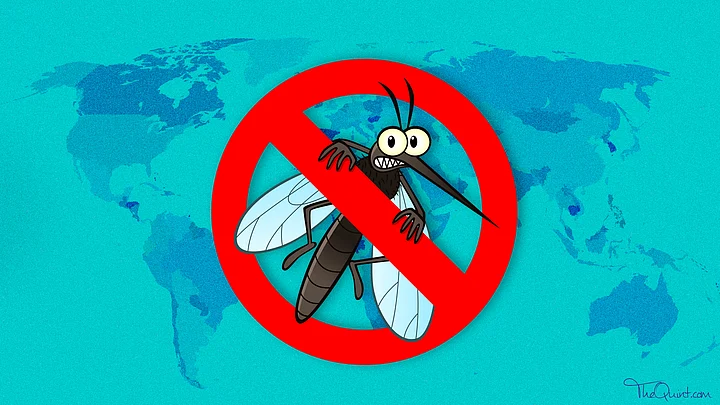Malaria has been so prevalent in the country that even Bollywood uses it in its songs, casually mentioning the mosquito-borne disease in the same breath as a common cold.
The good news is that India has made significant progress in reducing the incidence of the disease. The bad news is that we still have a long way to go to eliminate it from the country.
More than 90 percent of India’s is at the risk of a malaria infection, as compared to Bangladesh at 11 percent and Nepal at 48 percent. According to the National Vector Borne Disease Control Programme, last year, there were 10,59,437 cases of malaria in India, while 242 people died due to the disease.
This year, 13 cases have been reported till the first week of April. Here are six big facts about the disease.
According to the World Health Organization (WHO), the country has nearly halved the number of reported malaria cases between 2000 and 2014, from 2 million (20 lakh) to 1.1 million (11 lakh).
Although the reported cases in 2016 are lower than the 13 lakh cases in 2011, it is higher than in 2013 (8.8 lakh) and 2012 (10.5 lakh).
Global deaths have fallen by two-thirds since 2000. This is mostly because more than half of Africa’s population now sleeps under mosquito nets.
But outside of Africa, India bears the highest burden of the disease.
According to the World Malaria Report, India accounts for 6 percent of the total cases of malaria worldwide. In 2015, there were 212 million cases of malaria worldwide and some 4,29,000 deaths due to malaria.
Deaths due to malaria have also reduced over the years. In 2014, the disease claimed 562 casualties, while in 2016, the number went down to 242.
However, experts have warned against under-reporting of cases, as well as a discrepancy between government data and the actual figures. Surveillance and accurate data are key to elimination of the disease, as was seen in Sri Lankan succhess story.
Sri Lanka successfully eliminated malaria in 2016. India’s health ministry has projected that India will be malaria-free by 2030. The health ministry has announced plans to ensure “zero indigenous cases and deaths due to malaria for 3 years,” in order to gain the malaria-free status by 2030.
In February 2016, India unveiled the National Framework for Malaria Elimination 2016-2030. It set specific targets for the years leading up to 2030, with phased targets based on the differing endemicity of malaria in different states.
India will need an investment of USD 18 billion to achieve its 2030 deadline to eliminate the disease, the latest estimate by the health ministry and malaria advocacy groups has revealed.
Global malaria deaths have fallen considerably and half of the world’s nations are malaria-free. This is likely to prompt multilateral organisations to shift focus from malaria to other priority health areas. This is bad news for India, which lags in comparison to the rest of the world.
Bruno Moonen, deputy director for malaria at the Bill & Melinda Gates Foundation said:
The decline in the number of malaria cases in India is an indication for funding agencies and, more importantly, for the government to keep up the momentum because this is the most crucial stage. There is evidence showing that pulling out investments would bring back malaria.
With the Europe region and Sri Lanka having eliminated the disease, we have precedence that it can be achieved. And now, the world’s first malaria vaccine is being tested in three African countries. Armed with these preventive measures, India can achieve its 2030 goal if we concentrate our efforts.

